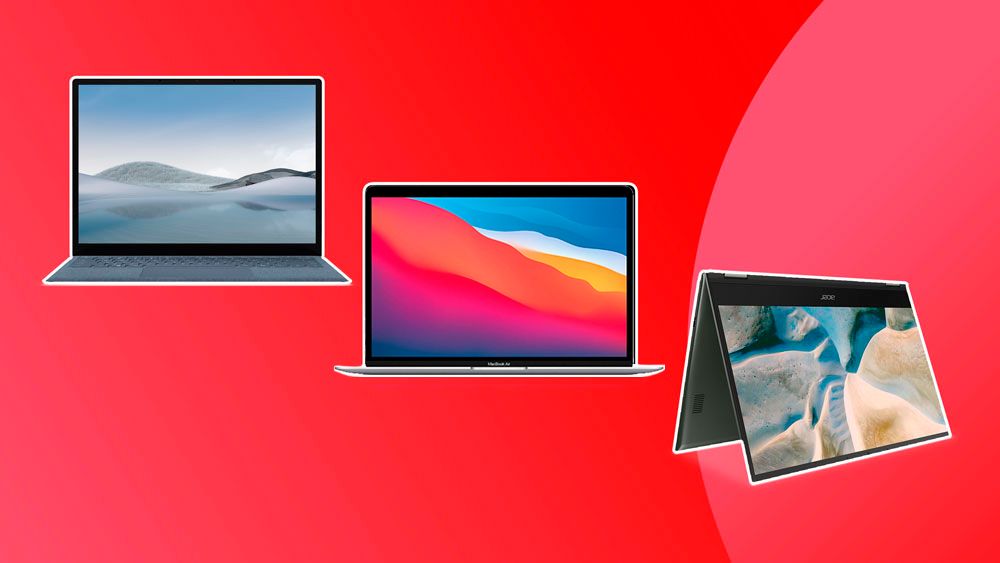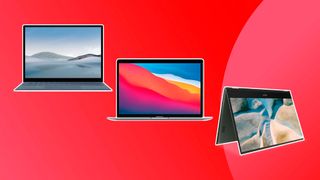
The list in brief ↴
1. Best overall: MacBook Air M1
2. Best Chromebook: Acer Spin 514
3. Best for creatives: Vivobook Pro
4. Best mid-range: MSI Prestige 14
5. Best 2-in-1: Surface Go 3
6. Best budget: Acer Aspire 5
7. Most powerful: MacBook Pro 16
How to choose
How we test
FAQs
The best student laptop is not just a nice thing to have, it’s essentially to helping you through higher education. So when you compare it to the cost of your course fees, it’s clear that it’s something worth investing in. However, with so many models on the market, where on eath do you start?
At Creative Bloq, we’re here to help. Our experts have been testing and reviewing laptops for over a decade, using a mix of benchmark tests and hands-on expertise. And so we’ve put them to work, curating a list that will suit both students’ needs and their limited budgets. From the best MacBook for students to the best ASUS laptops, we’ve gathered the best options to suit every level of student and type of course.
If you like what you see here, we also have guides to the best iPads for students, as well as the best tablets for students. And while you’re at it, don’t forget to make the most out of savings such as the Apple student discount and Samsung student discount offerings.
The quick list
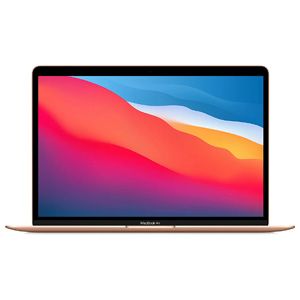 Best overall
Best overall
Screen: 13.3in 2560 x 1600 Retina display
CPU: Apple M1 chip with 8‑core CPU
RAM: 8GB – 16GB unified memory
The most affordable MacBook isn’t the newest, but with Apple’s M1 chip, brilliant battery life and a slim, light build, we think it meets most students’ needs. It’s a great value option since it’s regularly discounted.
Read more
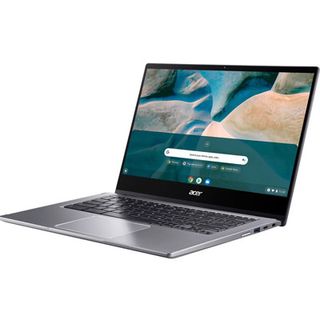 Chromebook
Chromebook
Screen: 14in FHD 16:9 Touchscreen
CPU: AMD Ryzen 5 3500U processor quad-core 3.7 GHz
RAM: 8GB
This Chromebook is an excellent value choice for students since its very portable and affordable. It has a 14-inch FHD touchscreen, deft keyboard, and the solid metal chassis makes it a robust option for carrying in a school bag.
Read more
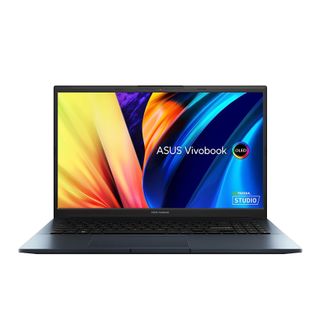 For creatives
For creatives
Screen: 15.6in FHD (1920 x 1080), 2.8K
CPU: Up to AMD Ryzen 9 – 7940HS
RAM: 8GB or 16GB
I own this ASUS laptop and can highly recommend it for students and creative professionals. It has a beautiful OLED display, powerful hardware, and can be used for gaming too.
Read more
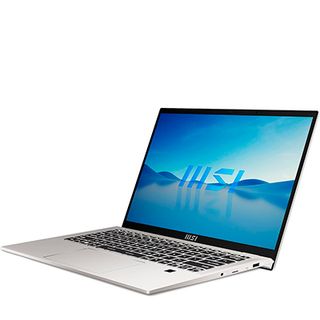 Best mid-range
Best mid-range
Screen: 14in FHD
CPU: up to 11th Gen IntelCore i7
RAM: 16GB
We found this option to be a solid mid-range Windows option offering solid build, portability and good colour coverage. It’s a pedestrian but reliable option that doesn’t break the bank.
Read more
 Best 2-in-1
Best 2-in-1
Screen: 10.5in 1920 x 1280 PixelSense
CPU: Intel Pentium Gold 6500Y – 10th Gen Core i3
RAM: 4GB – 8GB
A 2-in-1 hybrid can offer benefits for those using their device in lectures, cafe and on transport travelling to and from school. The Surface Go has its limitations, but its highly portable.
Read more
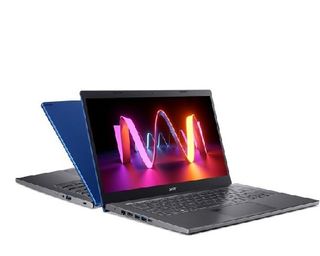 Best budget
Best budget
Screen: 14in, 1080p, IPS LCD
CPU: Intel Core i5 / i7 or AMD Ryzen 5
RAM: 8GB
This is one of the best options for students on a tight budget. In fact, we’re talking almost Chromebook prices, but without the limitations that come with using ChromeOS.
Read more
The best student laptop overall
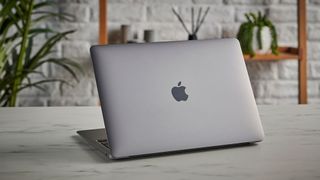

Specifications
Reasons to buy
Reasons to avoid
It might not have an M3 chip, but we think the MacBook Air (M1, 2020) is currently the best and most affordable laptop in the Apple family for students. While this model has since been overtaken in performance by the M2-powered MacBook Air, and more recently the MacBook Air M3 range, this older model remains our top pick not only because of its significantly lower price, but also the fact that it still performs well enough to easily handle most students’ computing needs with ease.
More than half of the Creative Bloq team still use this laptop daily, so we know it very well indeed. Its thin and light fan-less design makes it comfortable to carry around – ideal if you’re lugging your laptop around campus or between lectures, and the absence of a fan also makes it super quiet, ideal for studying in the library.
In our tests, the battery on this MacBook achieved well over a full day of use on a single charge, which will be reassuring for those who like to study at a cafe or other venues where you might not have access to a power outlet. It also has enough ports to support most of the peripherals you might want for college or schoolwork, such as a mouse and external storage.
Although no longer Apple’s newest, our reviewer noted that the M1 chip is well-optimised for a wide range of applications, so regardless of whether you’re studying economics or visual design, there’s very little that this compact and lightweight laptop can’t handle. Although, we would consider a laptop with more memory if you’re studying video editing or 3D design courses, and your budget allows for it.
See our full MacBook Air (M1, 2020) review for more details.
The best Chromebook for students


Specifications
Reasons to buy
Reasons to avoid
If you’re a student on a tighter budget, or you only need a laptop for simpler tasks such as taking notes and writing essays, then we’re confident a Chromebook may be all you need. These excellent value stripped-back laptops run ChromeOS, which means you won’t be able to use some of the desktop software that you would use on a Windows or Mac computer, so keep this in mind. However, there is now a wide range of apps available for ChromeOS, and many popular programs are becoming available as browser-based apps instead for Chrome users.
We think the Acer Chromebook Spin 514 is the best Chromebook for students thanks to the 2-in-1 versatility of its laptop and tablet modes. It offers a solid, durable build, and a sharp 14-inch Full HD touchscreen. We tested the quad-core AMD Ryzen 5 configuration and found that it could easily handle all the tasks that ChromeOS is capable of.
The typing experience should be comfortable enough for those writing essays for university, and the solid metal chassis and sturdy hinges make this a reassuringly solid option for lugging around in a bag. There are plenty of ports on this laptop too for those who need to connect peripherals or additional storage. The screen is particularly impressive for a Chromebook, and means it could even please student artists, who will be able to make use of the tablet mode function, although it is a little heavy to hold. See our Acer Chromebook Spin 514 review for all the details.
Best student laptop for creatives
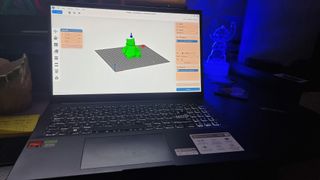
Specifications
Reasons to buy
Reasons to avoid
As a photography student, this is the laptop that I personally owned while studying for my Master’s degree. I highly recommend it for students as an excellent choice for multitasking as it offers a great balance between professional and personal use. For example, I used this laptop for essay writing, extensive photo editing, online lectures and Teams meetings, plus it could handle light gaming sessions in the evening.
I love that it has enough processing power to run any creative software, including 3D modelling slicers as the image above demonstrates, as well as Adobe‘s suite of Creative Cloud apps. The Pantone-verified OLED screen also makes it a perfect laptop for photo editing, and I loved the small design features like the built-in privacy shutter, fingerprint reader, and backlit keyboard for late-night essays.
Overall, I think the Asus Vivobook Pro 15 is a very well-balanced option for students on creative courses, and it’s not extortionately priced, either. The specs can be configured with 16GB of RAM, enough to run most software for visual art and design students, although the performance is not super seamless when it comes to 4K video editing, with a noticeable fan noise.
Despite some hefty hardware, this laptop is ultra-lightweight, making it comfortable to carry around, and the slimline 180° hinge design means you can share on-screen work with colleagues in class. There are also plenty of ports for a range of peripherals like graphics drawing tablets, plus three USB-A ports as well as a Thunderbolt USB-C.
For students of graphic design specifically, we would suggest this laptop as a better alternative to many of the 2-in-1 devices available, since it provides more power and support for a dedicated drawing tablet, which will be a vast improvement over directly using a hybrid tablet device’s screen as a pen display.
Take a look at my Asus Vivobook Pro 15 review for everything you need to know.
Best mid-range laptop for students

Specifications
Reasons to buy
Reasons to avoid
For a Windows option firmly in the middle of the range, we think the MSI Prestige 14 Evo is a good option for students, with enough specs to cover a wide degree of uses while keeping costs down. We found that, like all MSI laptops, this is a well-built machine that can handle being carried around while sporting a sleeker and less bulky design than the boxy gaming laptops the company is known for.
With 16GB of RAM, we found it had enough oomph to students working in visual design and photo editing programmes. Integrated Iris Xe graphics rather than a dedicate GPU means this isn’t a great option for video editors and 3D modellers, but photography students will appreciate the microSD slot and 100% sRGB coverage.
Read our full MSI Prestige 14 Evo review to learn more.
Best 2-in-1 laptop for students
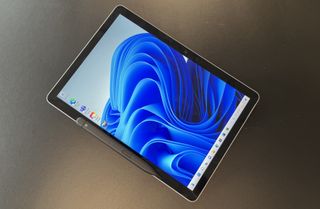
Specifications
Reasons to buy
Reasons to avoid
The Surface Go 3 is the most affordable 2-in-1 tablet in the Microsoft family, and while it’s nowhere near as powerful as the Surface Pro, it has a similar design and is more capable of running low-demand software and web-based applications, making this an ideal choice for younger students at school.
It comes equipped with Windows 11 and can still run some basic design applications reasonably well. In our test, we had no issues using Clip Studio Paint to create a few digital illustrations for example, but this isn’t a device you’ll want to edit images or video footage on.
It’s important to note that you’ll have to purchase the keyboard separately (and stylus too if you want that), so the device is sold in its tablet-only form, but when paired with its various accessories the Surface Go 3 is more lightweight and compact than most traditional laptops on the market. And these are the biggest advantages for students, since the compact size makes this comfortable to carry around or use in class (or even on the bus to school).
You can read more details in our full Microsoft Surface Go 3 review.
Best budget laptop for students
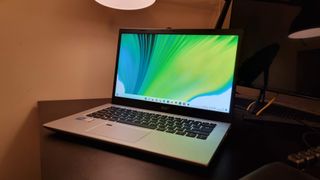
Specifications
Reasons to buy
Reasons to avoid
We think the Acer Aspire 5 is one of the best options for students on a tight budget and one of the cheapest recommendable laptops running Windows 11. In fact, we’re talking almost Chromebook prices, but without the limitations that come with using ChromeOS.
There are a few caveats. This won’t hold up to running graphically demanding applications, but for younger school-aged children, and indeed anyone who needs a laptop for basic word processing and some light media, it will do the job just fine. AS we expected, there are a few setbacks that come with a laptop at this price, such as the inclusion of a brand-specific charger over the more common USB-C, and it’s not the most stylish device on the market.
We found it could handle basic image editing in Adobe Photoshop, but anyone who needs something for video editing or 3D design will need to look at more expensive hardware. But if you’re looking for a Windows student laptop at a very cheap price, this is our top recommendation.
Read our in-depth Acer Aspire 5 review to find out more.
Best powerful laptop for students
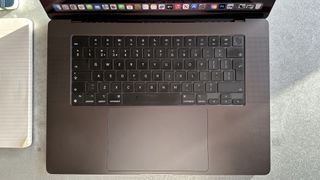
Specifications
Reasons to buy
Reasons to avoid
The MacBook Pro 16 isn’t just one of the best laptops for students right but one of the best laptops period. As such, it comes with a pretty hefty price tag, and it’s a lot more than almost any student needs. That said, power uses on courses in 3D animation, video editing and other graphically demanding disciplines will without doubt appreciate the power and efficiency on offer here.
In fact, running benchmarks using Blender, we concluded that the Pro 16 is a viable replacement for a desktop machine in many scenarios. It feels smooth and fluid, interactive rendering runs with ease and high polygon and model count scenes showed no signs of slowdown and when video editing – even 8K or multicam timelines are responsive. Blackmagic Design DaVinci Resolve and Fusion projects feel super smooth.
And while many rival workstation laptops often sacrifice battery life in exchange for power, in our own tests we worked for 10 hours in Cinema 4D before the power indicator turned red, and the laptop never got uncomfortably hot. Sure, it’s expensive but for those on demanding creative courses, we would say this is the best laptop for students who can afford it. The 14in version is more portable and slightly cheaper, but those on creative courses are likely to appreciate the larger screen of the 16in model as long as they’re not regularly on the move with their laptop.
See our full MacBook Pro 16 M3 review for more details.
How to choose the best student laptop
Choosing the best student laptop will depend on your needs and budget. Naturally, different students will have very different requirements for a laptop depending on what they’re studying. Many will not need massive amounts of power, while those studying subjects such as video production and 3D design will have greater needs.
Students of creative subjects are likely to need at least 16GB of RAM and possibly a laptop with a dedicated GPU. They’ll likely also have greater demands for the display of their laptop, requiring a good colour gamut for visual work. Other students can better prioritise value and portability.
We’ve considered these different needs when selecting the options to include in our guide above. In our experience, there are three major factors to consider:
Portability: If you’re ferrying your laptop to lectures, seminars and the library for all-night cram sessions, you don’t want it to be giving you back problems. A laptop that doesn’t weigh too much and can easily fit into a standard backpack or shoulder bag should definitely be a priority for a student.
Battery life: The last thing you want is your laptop running out of power at a critical moment, and if your laptop can’t get you through the day, it’s probably not going to be hugely useful to you as a student.
Affordability: Of course, everyone is looking for value with any purchase they make, particularly tech, but for many students, affordability is a more important factor than it is for working professionals who still need a solid laptop. Thus, getting as much computing power on the dollar as possible is paramount.
How we tested the best student laptops
All the laptops in this guide have been reviewed and tested by Creative Bloq’s hardware experts, who have not just run them through a gauntlet of benchmarking, but also used them in real life over weeks and sometimes months.
Our reviewers have specifically put these devices through their paces with tasks that students in different fields tend to carry out. We spend several days testing each device and comparing their specifications to pick the best laptops for students with varying needs. We run different benchmark tests on each device depending on its intended use by its maker, but the laptops we’ve included in this guide have all been run through the following:
• Cinebench R23/2024 – this assesses the performance of a computer’s CPU and GPU using real-world 3D rendering tasks
• Geekbench 5/6 – this tests the CPU’s processing power, both by using a single core for a single task at a time as well as all the CPU’s core to see its ability to multitask
• Handbrake – we use this free and open-source transcoder for digital video files to render a short 4K animated film, using the same file for all our tests
• 3DMark – this assesses a computer’s ability to run graphic rendering tasks, including for gaming
• PCMark 10 – this test assesses a computer’s ability to run all everyday tasks from web browsing to digital content creation, testing app launch speeds, 3D rendering and even battery life
But perhaps more importantly than technical benchmarking, we evaluate machines in real-world situations, pushing them to the limit with multiple applications running to see how they perform in real project-like conditions. Power, speed, flexibility, and what a computer looks and feels like to use are all criteria in our reviewing process.
We do much more than simply unpack a test unit, run some benchmarks and then pack it up again; we have lived and worked with all of the above computers, running them in real-life scenarios and completed projects relevant to the subject of this guide, otherwise, we wouldn’t recommend these models to you. For more details, see our article on How we test.
FAQs
How much computing power do I need for a student laptop?
Different laptops offer varying levels of computing power, and different students will have different needs in this area. If your area of study doesn’t require the use of demanding creative software for things like video editing or 3D rendering and you’ll be using your laptop mainly for online research, writing essays or programming, you don’t need a lot of power.
In this case, one of the Chromebooks or 2-in-1 hybrid laptops on our list with RAM in the 4GB to 8GB range should serve you just fine, still providing enough memory to handle entertainment needs outside of study time (also see our guide to the best laptops for writers).
However, you may be studying a course that requires more intensive processing power, in which case a student laptop won’t necessarily be a budget option. If you’re editing video, for instance, or working with 3D software, you’ll need 16GB of RAM or more.
A laptop with a good dedicated graphics card can also be a useful investment for those working in visual arts or design (or just if you plan to do a fair amount of gaming in your downtime). The products featured in our most powerful laptops guide may be worth checking out if this is the case.
Which laptop brand is best for students?
When buying a student laptop, you want a device that is well built, affordable and reliable. For that last point, we generally recommend opting for brands that have a good reputation – you want your laptop to get you through at least your whole course of study, if not a lot longer.
Good brands for reliability that have consistently done well in our own testing over the years include Dell, HP, Acer, Asus and Microsoft for Windows laptops, and, of course, Apple. For creatives, Asus’s VivoBook range offers good prices on devices built with creative work in mind, and we recommend considering these if you’re starting a course for video editing or digital illustration.
It’s also always worth checking whether your college has a particular policy or recommendation. Some recommend using Windows-based laptops to reduce software incompatibility issues or facilitate technical support.
How can students save money on laptops?
With budget a primary concern for students, it’s worth exploring you’re options for how to save money. Of course, there are the standard sales and deals offered throughout the year, but there is also opportunity for special student discounts available all year round, like the Apple Student discount, Samsung Student discount or the Dell student offers.
Another option is to look out for previous models of decent laptops. If you don’t need the newest version (and you probably don’t), there are excellent savings to be made by looking at older models.
Can a student laptop be used for gaming?
A student’s gaming laptop will require a bit more power than one that’s just used for writing and web-browsing. A good gaming laptop needs both graphical and processing power to ensure that modern games run smoothly, with no lag or stuttering. See our roundup of the best gaming laptops for more.
Why is a laptop important for students?
The vast majority of students are likely to benefit enormously from a laptop – even if it’s a relatively basic lightweight Chromebook. Not only does a laptop allow you to work on assignments and courseworks wherever you are, it can also be used to take notes during lectures and seminars. They also serve for organisation, online research and more. Plus the vast majority of laptops also have integrated webcams, essential for those whose programmes include online classes.
Do Chromebooks make good student laptops?
Yes, they do. Not every student will need massive specs. We’ve included a Chomebook at number 2 in our guide to the best student laptops because for many students giving up a big storage capacity for super speed makes very good sense. The apps that Chromebooks run take up very little space, and with built-in support for Google Drive, it means your documents are all saved in the cloud as well.
Are hybrid 2-in-1s good student laptops?
Again, this is a resounding ‘yes’ in our opinion. Hybrids, also known as 2-in-1s combine the best of tablets and laptops into a highly portable package that’s ideal for slinging in a bag to carry to school or university. Devices like the Microsoft Surface Go 3 above are great for working in spaces where you might not have a desk – even on the train, while you can still keep the convenience of a keyboard for when you need it.
